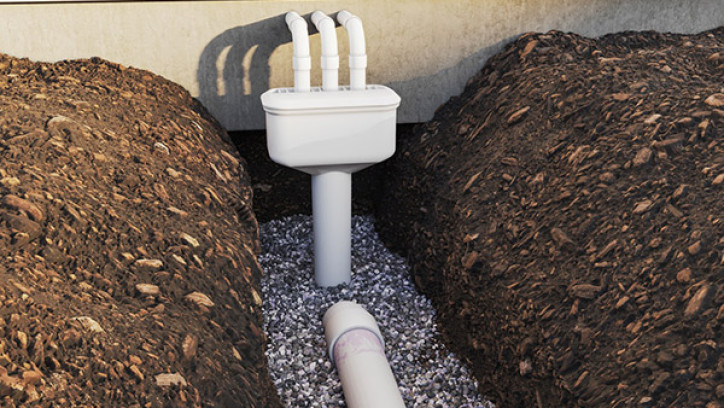4.6 Minor alteration to drains

This exemption only relates to dwellings and enables an authorised person to alter existing private drainage without needing a building consent. This sort of building work usually occurs during alterations to existing bathrooms, kitchens, laundries or toilets.
Please note: The below exemption comes into force from 31 August 2020. You will still need a building consent if your project starts before this date.
This exemption only relates to dwellings and enables an authorised person to alter existing private drainage without needing a building consent. This sort of building work usually occurs during alterations to existing bathrooms, kitchens, laundries or toilets.
New connections to public drainage are specifically excluded from this exemption.
What is exempt
- A homeowner instructs the plumber to relocate the kitchen sink to an adjacent wall. The existing gully trap servicing the kitchen needs to be shifted a short distance to receive the discharge from the repositioned sink wastepipe.
- A toilet pan has been repositioned in an existing dwelling's bathroom and is reconnected 1 metre downstream from the previous drain connection.
- Installing a new access or rodding point for unblocking drains.
- Capping a branch drain following the removal of sanitary fixtures from an outbuilding associated with a dwelling.
- A NUO has provided a new sewer lateral connection at the boundary of an existing dwelling and capped the previous lateral. The owner’s drainlayer reroutes a 2 metre length of drain to reconnect to the new NUO lateral.
What needs consent
- A dwelling's branch drain is intended to be extended by 16 metres. As the branch drain will exceed 10 metres, it comes under requirement for venting under Building Code clause G13 – Foul water. As the length and venting requirements of the drain are more than a minor alteration, a building consent is required.
- A motel owner plans to reconfigure their laundry, which includes adding another laundry tub. As a consequence, the main drain will need to be extended by several metres around the perimeter of the building. Although the drain extension is minor, the installation of an additional laundry tub is outside the scope of exemption 34 (section 4.6). Furthermore, as the building is not a dwelling, it is not covered by this exemption and a building consent is required.
- A drainlayer contracted by a building owner proposes to reposition a dwelling's drain connection into the NUO drain which traverses the property and is covered by an easement on the title. A building consent will be required as this is a new connection to a NUO drain.
What the law says
34. Minor alteration to drains
1. Alteration to drains for a dwelling if the alteration is of a minor nature, for example, shifting a gully trap.
2. Subclause (1) does not include making any new connection to a service provided by a network utility operator.